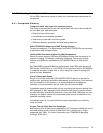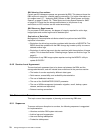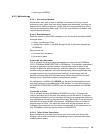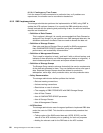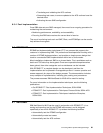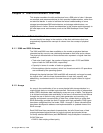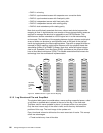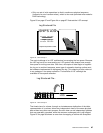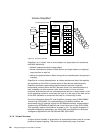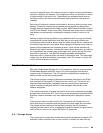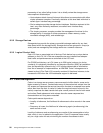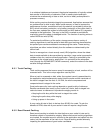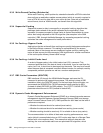
© Copyright IBM Corp. 1999 85
Chapter 9. Disk Environment Overview
This chapter considers the disk architecture from a DB2 point of view. It focuses
on concepts and recommendations for their practical implementation, rather than
on technical details. In order to facilitate the mutual understanding of some
storage terms between DB2 administrators and storage administrators, we
highlight them in italics. Several considerations in this chapter could also apply to
the new tape server environments, such as the IBM Seascape Virtual Tape
Server.
9.1 Evolution of Disk Architecture
We can identify four steps in the evolution of the disk architecture that have
progressively separated the concept of volume from the concept of physical
device.
9.1.1 3380 and 3390 Volumes
The 3380 and 3390 have been available on the market as physical devices
characterized by a one-to-one relationship between a disk drive and a volume.
The physical characteristics of these devices also represent a logical view that
consists of:
• Track size (track image), the number of bytes per track: 47476 and 56664
bytes of data for 3380 and 3390, respectively
• Capacity in terms of number of tracks or gigabytes
• Device address (device number), which is a thread onto which I/O operations
are serialized by the operating system
Although the physical devices 3380 and 3390 will eventually no longer be used,
the logical view—with the three characteristics of track size, capacity, and
addressing—continues to exist in the new concept of logical volume or logical
device.
9.1.2 Arrays
An array is the combination of two or more physical disk storage devices in a
single logical device or multiple logical devices. Redundant array of independent
disks (RAID) distributes data redundantly across an array of disks. The objective
is to achieve continuous data availability in the face of various hard drive failures
through the use of disk mirroring, parity data generation and recording, hot
sparing, and dynamic reconstruction of data from a failed disk to a spare disk.
RAID technology provides the disk I/O system with high availability. RAID types
have been categorized into five levels: RAID 1 through 5. Some new definitions
have been developed to address new implementations or updated views of the
RAID concept.
Each RAID level has some basic characteristics, but all of them have a fixed
mapping between logical devices (or logical volumes) and physical drives.
Currently admitted definitions (see IBM RAMAC Array Subsystem Introduction,
GC26-7004) are:
• RAID 0: data striping without parity



